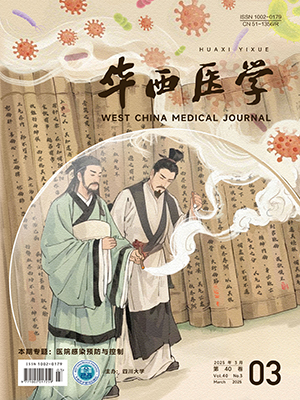Citation: XUGui-ting, MIChen-rong, LIWen-hui, ZHANGYi-bo, GONGZheng-feng, NIYu-xing, WANGQun. Distribution and Drug Resistance of Acinetobacter baumannii Isolated from Inpatients in Ruijin Hospital from 2008 to 2012. West China Medical Journal, 2014, 29(3): 413-416. doi: 10.7507/1002-0179.20140125 Copy
Copyright © the editorial department of West China Medical Journal of West China Medical Publisher. All rights reserved
-
Previous Article
Establishing Long-term Mechanism of Cross-inspection to Promote Continuous Quality Improvement of Hospital-acquired Infection Management YINWei-jia, HUANGWen-zhi, HUANGJing, ZHUANGHong-di, QIAOFu, RAOLi, ZONGZhi-yong -
Next Article
Distribution and Drug Resistance of Pathogens in Neonates with Lower Respiratory Tract Infection KUANGLing-han, WANGJia-min, ZHOUWei, JIANGYong-mei




